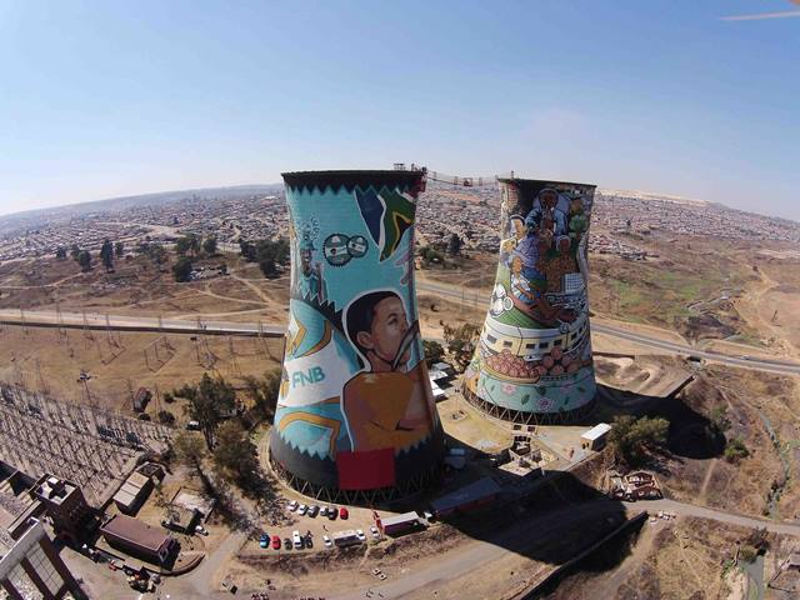6 Easy Facts About Johannesburg North Attractions Described
6 Easy Facts About Johannesburg North Attractions Described
Blog Article
The Only Guide for Johannesburg North Attractions
Table of ContentsUnknown Facts About Johannesburg North AttractionsExcitement About Johannesburg North AttractionsJohannesburg North Attractions Things To Know Before You Get ThisNot known Incorrect Statements About Johannesburg North Attractions The Best Strategy To Use For Johannesburg North AttractionsAn Unbiased View of Johannesburg North Attractions
The city owes its place to the visibility of a much more valuable resource: gold. The city expanded on the edge of the Witwatersrand Main Coral reef, a subterranean stratum of gold-bearing quartz-silica conglomerate that arcs for thousands of miles beneath the Highveld. A lot of the gold mines in the city stopped operation in the 1970s, but in its day the Witwatersrand gold market accounted for more than 40 percent of the globe's annual gold manufacturing.Johannesburg has a warm environment. The city appreciates concerning 8 hours of sunshine per day in both winter and summer season.
What rainfall the city gets drops almost exclusively in the summertime months, often in amazing late-afternoon electrical tornados., where numerous citizens still count on coal for gas.

More About Johannesburg North Attractions
The equilibrium of the city is occupied by whites. Holiday accommodation varies in personality and high quality.
Physical growth, although somewhat restricted by transportation, proceeded rapidly as migration to South Africa, and Johannesburg specifically, increased significantly. This issue was addressed in the 1930s when the car was introduced in mass manufacturing to South Africa. Cars were, generally, restricted to the rich, and allowed them to relocate to the north of the city and commute right into the centre.
Many inadequate residential areas were combined, with bad blacks and whites living with each other, although the well-off suburban areas were typically booked for whites.
The previous system of eleven numbered regions was reorganised in 2006. Marshalltown, as seen from the top of the Carlton Centre. The M1 and M2 run behind the structures, and the southerly suburbs prolong past the highway limit. The central city of Johannesburg is located within the city's Area F. The number of people living in the internal city on an informal basis is unknown, as several are prohibited immigrants. The joblessness, education and learning, and age profiles of the area are all unidentified, due to the trouble of getting trusted information concerning the location.
Johannesburg North Attractions Fundamentals Explained
Centred on the CBD, the area consists of the suburbs of Yeoville, Bellevue, Troyeville, Jeppestown, and Berea to the east. To the go to my site west it infects Pageview (Johannesburg North attractions) and Fordsburg. There are small industrial parks to the south, such as City West-Denver and Benrose. Around 800,000 travelers Get the facts pass through the inner city daily, and it operates as a regional shopping node for visitors from the southern suburbs. Yeoville and Bellevue have a mix of home structures and single property devices on little great deals. The region is located on a hilly divide that ranges from east to west. One of the most obvious geographical attribute is Observatory Ridge, which is called for the large observatory situated on it. The recreational rooms are no much longer utilized, because of protection problems.

Our Johannesburg North Attractions PDFs
The eastern suburban areas are some of the earliest areas of Johannesburg, there are large communities of Jewish and various other European histories, the majority of the populace is English speaking. There are 3 golf programs as well as a number of secured ridges with viewsites.
Initially built to house male migrant workers, lots of have been boosted as houses for pairs and family members. The suburban area was not traditionally allowed to develop employment centres within the location, so nearly all of its residents are travelers to other components of the city.
Johannesburg North Attractions Fundamentals Explained
The domestic areas in the northern suburbs are primarily official, with no considerable locations of informal real estate, or real estate that does not have a long-term framework. This is a recognized area, there is a fad of land use adjustment from residential to business, especially along main arterial roadways and around recognized nodes.
The location is well read the full info here attached to road networks, specifically along the north-south axis created by the M1 and N1. Roads to the eastern and west are less well created, as there are no highways taking a trip in that instructions. In the direction of the northern border of the city, the density of growth lowers, leaving huge locations of untaught land around Midrand.
Rumored Buzz on Johannesburg North Attractions
The first suburb to the north of the central city is Parktown, which lies on a hill overlooking the internal city and Hillbrow. It has several wealthy residents and Edwardian-design estates, as well as the Education and Clinical universities of the University of the Witwatersrand. The large concrete Charlotte Maxeke Johannesburg Academic Medical Facility dominates the sky line of Parktown.
Report this page